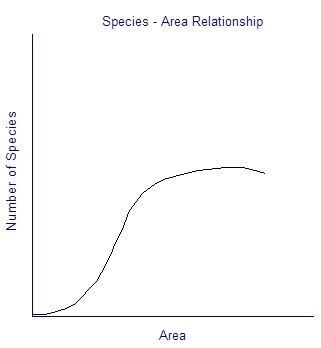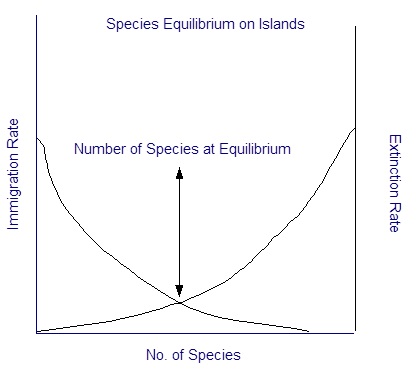AGLS 6502 Lecture 11 - Management of Wildlife in Nature Reserves and Parks
11.1 Unit Objectives and Textbooks
Objectives:
1. Designing Reserves to accommodate Wildlife (Temple)
- Environmental Conditions Necessary for Survival (Ch. 6)
- Physical Needs
- Water
- Solar Radiation
- Temperature
- Daylight
- Air Currents
- Soil
- Barometric Pressure
- Biological Needs
- Food
- Behaviour
- Community
- How the Community Provides for the Needs
- Pattern
- Structure
- Size
- Layers
- Other
- The Ecotone
- Diversity
- Succession
- The Ecosystem and Biosphere as Support Systems
- Energy
- Energy Conversion
- Ecological Efficiency
- Mineral Cycles
2. International and External Threats to Wildlife in Reserves
- Habitat Alteration - Chapter 8 Anderson (1991)
- Physical Change
- Destruction
- Decrease
- Subdivision
- Structural Change
- Biological Change
- Competition
- Introduction of Exotics
- Effects of Habitat Change on Wildlife
- Loss of Food
- Movement Patterns
- Stress
- Mechanisms of Stress
- Noise
- Reduction of Stress Noise
4. Protected Natural Areas in the Caribbean and Latin America
5. Threatened Areas in the Caribbean and Latin America: Areas in need of Urgent Attention
Textbooks
Anderson (1991) Chapters - 6, 7, 8
11.2 Why protected natural areas?
Current land cover by natural areas
Many countries have experienced significant losses of natural habitats.
Rate of habitat loss
For Tropical forests alone, 20 million hectares were lost in 1998.
Rate for all forests close to 150,000 km2 per year.
Implications for Endangered Species
1. Loss of critical habitats
Tropical forests are very important because 50 percent of the earth’s biodiversity are found in these habitats.
2. Loss of habitats for species recovery and reintroduction
3. Loss of Traditional Human Cultures
Disappearance of traditional human cultures due to alienation of these peoples from their traditional homes, and the transformation of these places through harvesting of timber or other resources or conversion of these places to agricultural landscapes. With this comes the loss of traditional knowledge of rare plants and animals and the values of these biological resources.
4. Loss of Instrumental Values & Intrinsic Values
- Goods: Fuel, food, fibre & medicine
- Services: Pollination, recycling, N4ixation, climate regulation
- Information: Genetic engineering, applied biology, pure science
- Psycho-spiritual: Asthetic beauty, religious awe, scientific knowledge
Current Areas listed globally as Protected Areas
As of 1994 there were 8,619 Protected Natural Areas, covering 7.923 million km2 or about 6 percent of land area on Earth. Those areas which can be considered as "strictly protected" areas are 3.5 percent of the earth.
11.3 Types of Protected Natural Areas
A few types:
IUCN Categories of Protected Areas
- Type I: Strict Nature Reserves/Wilderness
- Type II: National Parks
- Type III: National Monuments
- Type IV: Managed Wildlife Sanctuaries/Reserves
- Type V: Protected landscapes
- Type VI: Resource reserves
- Type VII: Anthropological reserves
- Type VIII: Multiple Use Areas
Problems in Protected Areas
- Human consumptive use of forest products (timber, medicinal plants, game?)
- Deforestation at park boundaries
- Migratory Wildlife Species
- Size of Park (Minimum dynamic area)
- Non-consumptive use of park or protected area (hiking, wildlife viewing)
- Funding for park management
- Human perception of parks. (parks versus people)
Building a better Park
Some theory: Species-area curves

MacArthur & Wilson (1969) The Theory of Island Biogeography

11.4 Design Criteria or Considerations for National Parks
1. Shape
- Large reserves are better than small ones
- One large reserve is usually better than several small ones
- Reserves close to each other are better than ones far apart
- Clustered reserves are better than linear ones
- Reserves with habitat corridors are better than those without
- Round reserves are better than linear ones
2. Location
i. Uniqueness
~ Is the ecosystem or some of its components unique?
e.g. Conservation International (Megadiversity/Hotspots), WWF - Threatened ecosystems program, USGapProgram
ii. Endangerment
Is this habitat type or any of its components threatened?
e.g. Indian Tiger Reserves (18 reserves in 1973)
iii. Representativeness
Do these reserves contain representative samples of the ecosystems found in the country?
iv. Utility
Is the area important to local people as a key resource or recreation site?
3. Size
Does the park or protected area provide a minimum dynamic area requirement for ecological processes in the specific ecosystem?
Managing Protected Areas
1. Minimising Threats
Some threats to parks include:
Internal:
grazing, fire, introduced species, illegal harvesting of wildlife
External:
economic threats such as development works e.g. mining logging proposal
2. Parks and People
Recent approaches to Park management include:
- Biosphere reserve model (UNESCO/MAB Program)
- Community co-management of the resource
- Landscape management (Ecosystem management)
- Lubchenco, J., Olson, A. M., Brubaker, L. A., Carpenter, S. R., Holland, M. M.,Hubbell, S. P., Levin S.A.1 MacMahon, J.A., Matson, P. A.1 Melillo, J. M.,Mooney, H.A., Peterson, C. H., Pulliam, H. R., Real, L. A., Regal, P. J., and P. G.Risser. 1991. The sustainable Biosphere Initiative: An Ecological Research Agenda. Ecology 72(2):371-412.
- Meffe, G.K., and C.R. Carroll. 1997. Principles of Conservation Biology. Sinauer Associates. Inc. Massachusetts. 729pp.
- Primack, R.B. 1995. A Primer in Conservation Biology. Sinauer Associates Inc. Massachusetts .2 77pp.
- Shafer, C.L. 1990. Nature reserves: Island theory and conservation practice. Smithsonian Inst. Press., Washington, D.C.
